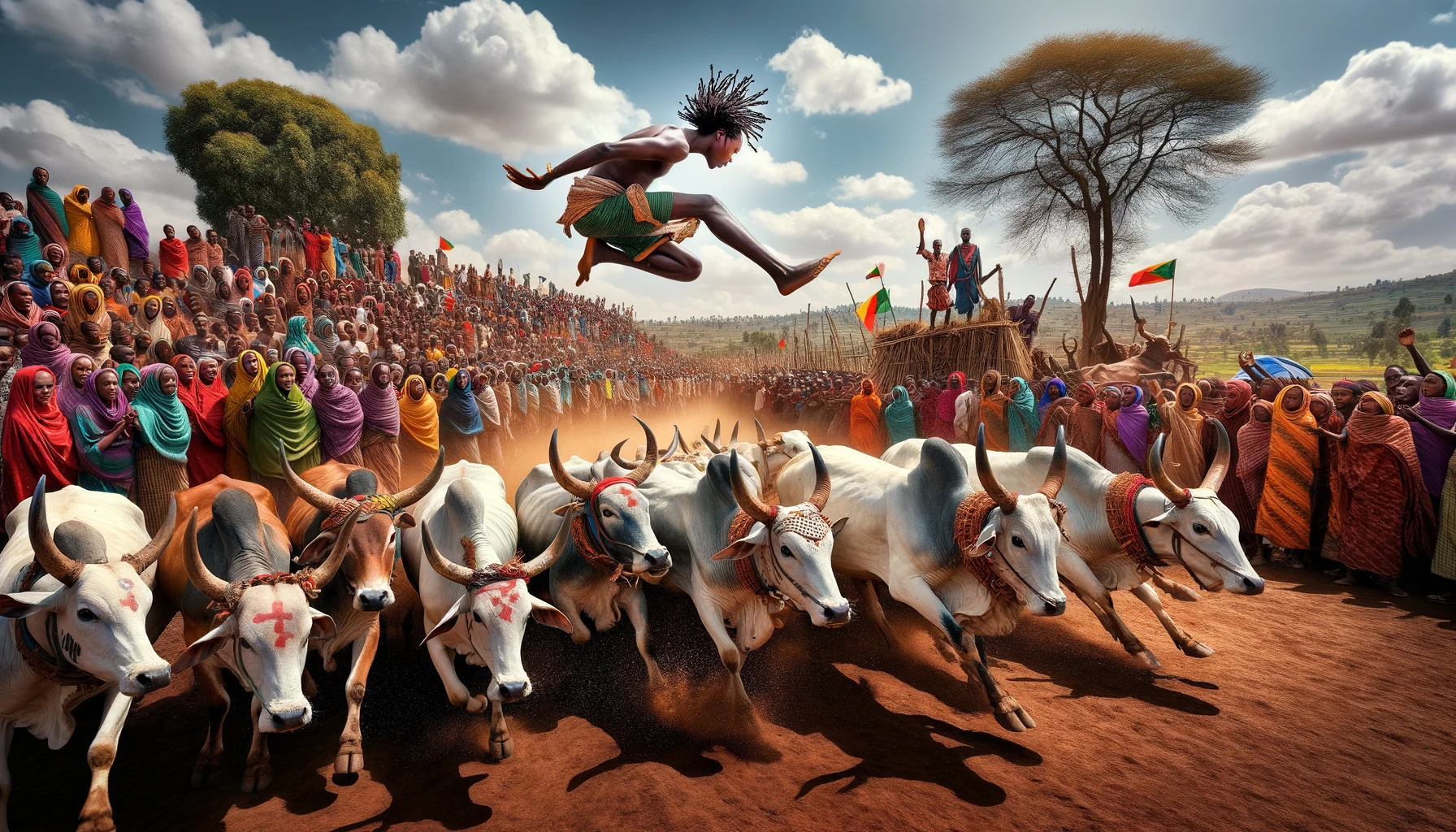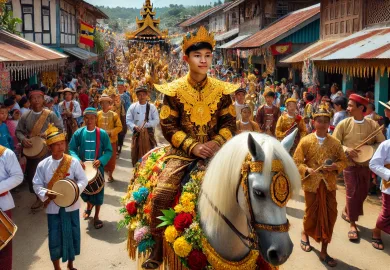
Traditional bull jumping is a significant and ancient ritual in Ethiopia, particularly among the Hamar people of the Omo Valley. This rite of passage is not only a demonstration of physical strength and agility but also a symbolic journey into manhood. It’s a tradition steeped in culture, communal ties, and the preservation of identity. In this article, we explore the origins, significance, and the vibrant ceremonies surrounding traditional bull jumping in Ethiopia.
Origins and Cultural Significance of Bull Jumping
Traditional bull jumping has deep roots in Ethiopian history, especially within the Hamar community. The ritual marks the transition of young men, known as “ukuli,” from adolescence to adulthood. It is an event that encompasses the values, beliefs, and social structure of the Hamar people.
The origins of bull jumping are intertwined with the Hamar’s way of life, which revolves around cattle herding. Cattle are central to the Hamar economy and social status, making the act of jumping over bulls both a literal and symbolic representation of a young man’s readiness to take on adult responsibilities. The ceremony is a public affirmation of maturity, strength, and the ability to contribute to the community’s welfare.
Bull jumping is more than just a test of physical prowess; it is a ritual that solidifies social bonds. Families and extended community members come together to witness and celebrate the initiation of the young men. This communal participation reinforces cultural continuity and ensures that traditional practices are passed down through generations.
The Ceremony: Preparation and Rituals
The bull jumping ceremony is a meticulously planned event that involves various stages of preparation and rituals, each with its own significance. The young man preparing to jump must undergo several days of rituals, which often include blessings from elders, fasting, and isolation to mentally and spiritually prepare for the challenge ahead.
The actual ceremony begins with the assembly of the community, where women play a crucial role. The female relatives of the initiate, particularly the young man’s sisters and cousins, perform a traditional dance known as the “evangadi.” During this dance, they chant and whip themselves with sticks, showing their support and enduring pain as a symbol of the trials their brother will face. This act of self-flagellation is a testament to their solidarity and willingness to share in the initiate’s struggles.
As the time for the jump approaches, the bulls are lined up, usually four or more in number, with their horns tied together to prevent any harm to the jumper. The ukuli, often naked, must leap across the backs of the bulls in a series of jumps. Successfully jumping over the bulls signifies the completion of the initiation, marking the young man’s transition into adulthood. Failure to complete the jump is rare, but if it occurs, the young man is allowed to try again after further preparation.
Symbolism and Social Impact
The symbolism embedded in the bull jumping ceremony is rich and multifaceted. The act of jumping over the bulls represents the overcoming of obstacles and the transition from one stage of life to another. It is a powerful metaphor for the challenges the young man will face as an adult, from taking on family responsibilities to becoming a protector and provider.
Beyond its symbolic meaning, the ceremony has a profound social impact. It strengthens the community’s cohesion, as everyone plays a part in the ritual, whether through direct participation or as witnesses. The successful completion of the jump elevates the young man’s status within the community, granting him new rights and responsibilities, including the right to marry.
The ritual also reinforces gender roles within the Hamar society. While the men’s role is to prove their strength and readiness for adulthood, women demonstrate their support and solidarity, reaffirming their roles within the family and community structure. This gender dynamic, though traditional, is integral to the cultural fabric of the Hamar people.
The Modern-Day Relevance and Challenges
In today’s rapidly changing world, traditional practices like bull jumping face new challenges. The spread of modern education, urbanization, and external influences are gradually altering the way of life in rural Ethiopia. Despite these changes, the Hamar people continue to uphold their traditions, including bull jumping, as a means of preserving their cultural identity.
However, the ceremony is not without controversy. Some critics argue that the ritual, particularly the self-flagellation of women, perpetuates harmful gender norms and physical abuse. Others view it as a crucial cultural practice that should be preserved and respected as part of the Hamar’s heritage.
The Ethiopian government, along with various cultural organizations, has taken steps to protect and promote traditional practices, recognizing their importance in maintaining the country’s diverse cultural landscape. Efforts are being made to strike a balance between preserving these ancient traditions and addressing the ethical concerns that arise from certain aspects of the rituals.
The future of bull jumping will likely depend on the ability of the Hamar people to adapt their traditions to the modern context while retaining the core elements that make the ceremony meaningful. As tourism in the Omo Valley increases, there is also the potential for the commercialization of the ceremony, which could further alter its significance and authenticity.
In conclusion, traditional bull jumping in Ethiopia is a profound cultural practice that embodies the values, beliefs, and social structures of the Hamar people. While it faces challenges in the modern world, the ceremony remains a vital part of their identity and heritage, symbolizing the transition from adolescence to adulthood and the continuity of cultural traditions.
This vibrant image captures the essence of a traditional Ethiopian bull jumping ceremony. The young man, mid-air as he leaps over the bulls, symbolizes his transition into adulthood. The colorful attire of the onlookers and the lively atmosphere reflect the cultural significance and communal spirit of this ancient ritual.








